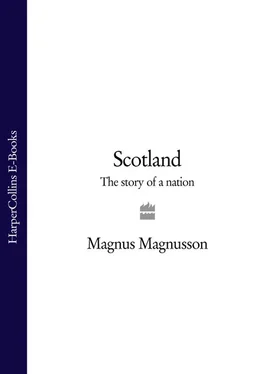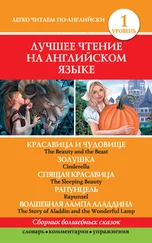Good-quality stone for tools is rare in Scotland, and the presence of bloodstone made Rum very special to the early inhabitants of the western seaboard; we know from archaeological sites elsewhere that people from many of the surrounding islands and the adjoining mainland used bloodstone from Rum for their tools.
Such were the first known inhabitants of prehistoric Scotland. They had moved up from the south (i.e. England) soon after the end of the last Ice Age, ten thousand years ago, during the Mesolithic period. This sounds very ancient indeed, but it is worth remembering that hunter-gatherers had been living in England for at least four thousand years before that; and in the much warmer climate of the Middle East, people were already living in cities and experimenting with woollen textiles, metal-working, pottery and the irrigation of farmlands.
The Mesolithic incomers to Scotland were not ‘settlers’, as such. They were small family groups or communities of nomadic people who lived by hunting, fishing and gathering plants; they would establish camps where they could spend the winter and then make forays in pursuit of deer herds in the spring and summer. They made tools and weapons of stone, they used fire for cooking and warmth, and they dressed in animal skins. They were mobile on both land and sea, and soon established barter-links with other semi-permanent communities.
It is impossible to say how large the Mesolithic population of Scotland was, but several sites have already been identified at places like Morton on Tentsmuir, north of St Andrews and at various other places from Grampian to Argyll.
The Mesolithic period in Scotland lasted for about four thousand years, and merged into the Neolithic (New Stone Age) period around 3000 BC. By then the last land-link between south-east England and the Continent was submerged, and Britain had become an island. This change had involved an influx of new people from the south, people who started to clear the forests and farm the land. There were now permanent communities, such as the marvellous Neolithic village of Skara Brae, on Orkney.
Skara Brae, Orkney (3100–2600 BC)
In the winter of 1850 a ferocious storm stripped the turf from a high sand-dune known as Skara Brae in the Bay of Skaill, on the west coast of mainland Orkney. An immense midden was exposed, as well as a semi-subterranean warren of ancient stone buildings. What came to light in that storm turned out to be the best-preserved prehistoric village in northern Europe. And not only was it perfectly preserved – it was the earliest in Europe as well: the village of Skara Brae was inhabited around 3100 BC, more than half a millennium before the Great Pyramid of Egypt was built (2500 BC), and long before Stonehenge (2000 BC).
A splendid new £900,000 Visitor Centre was opened in April 1998. It had taken ten years to plan and build, and it provides a graphic introduction to the story of Skara Brae, using interactive computer images and a replica of one of the original stone houses. But nothing can match the extraordinary experience of seeing the place for oneself.
The ‘village’ comprises half a dozen separate houses and some associated structures, including a very large workshop for manufacturing stone tools. The houses are spacious and cellular, connected by covered passage-lanes. The village was deliberately embedded into the congealed mass of the midden up to roof height, to provide stability and insulation. The walls were made of local Orkney flagstone, which is easily worked and splits naturally into building slabs. All the fittings and furnishings were also fashioned from flagstone – the kitchen dressers, the cupboards, the shelves, the compartments for the beds. Some of the houses had under-floor drains for indoor sanitation.
The houses are roofless now. Visitors walk along the tops of the walls and look down into the interiors of the houses. There is a startling sense of intimacy, peering down into these comfortable, well-furnished homes: it is easy to imagine the families who lived there for some twenty generations, from 3100 to 2600 BC. The village evokes a vivid sense of immediacy, of instant identity with that close-knit, self-sufficient farming and fishing community.
They lived well. The womenfolk owned a lot of jewellery (necklaces, pendants and pins made from bone, as well as ivory and pumice) which they kept in a recess above the bed. They cooked with home-made pottery on a square stone-built hearth in the centre of the room. Farming consisted of keeping cattle and sheep and a few pigs, and growing barley; the sea provided cod and saithe, lobsters and crabs, cockles and mussels. The nearby cliffs were a cornucopia of seabirds’ eggs. Wind and weather drove whales, dolphins, porpoises and walrus ashore on their doorstep.
It was a stable, unchanging lifestyle. Then the village was deserted, around 2600 BC – no one knows how or why. There is no archaeological evidence of sudden emergency or destruction.
The merging of the Neolithic Age into the Bronze Age also saw the flowering of an extraordinary architectural phenomenon – the erection of stone circles and standing stones. On Orkney, not far from Skara Brae, the Standing Stones of Stenness and the Ring of Brogar survive. But the most imposing, and probably the oldest, of the megalithic (‘big stone’) monuments of Scotland is the great complex at Calanais on the Isle of Lewis – Scotland’s ‘Stonehenge of the North’.
Calanais (Isle of Lewis): 3000–2000 BC
It used to be called ‘Callanish’ or ‘Callernish’. Before that it was ‘Classerniss’. But now the original Gaelic form of the name will be enshrined in the next Ordnance Survey maps of the Western Isles of Scotland, so ‘Calanais’ it is, officially.
Calanais on the Isle of Lewis lies at the head of Loch Roag, some twenty-four kilometres west of Stornoway. It was built in stages from about 3000 BC and was certainly completed by 2000 BC. Briefly, it is a circle of thirteen standing stones huddled round a massive central monolith, 4.75 metres high, and a small chambered cairn. A double line or ‘avenue’ of stones comes in from the north, and ragged tongues protruding from the circle create a rough cruciform shape.
The importance of Calanais has long been recognised. In the seventeenth century the people of Lewis called the standing stones Fir Bhrèige (‘False Men’):
It is left by traditione that these were a sort of men converted into stone by ane Inchanter. Others affirme that they were sett up in places for devotione.
JOHN MORISONE OF SOUTH BRAGAR, c.1684
By then the complex had been all but drowned in a layer of peat some 1.5 metres deep. In 1857 the owner of Lewis, Sir James Matheson, ordered the peat to be cleared, and the site became a Mecca for visitors. When the first Ancient Monuments Act was passed in 1882, Calanais was in the primary list of sixty-three prehistoric or later monuments to be scheduled for protection.
The landscape setting, and the setting of the stones themselves, have changed considerably since then. The local inhabitants, who had lived in a row of crofting houses built in the 1860s at the southern edge of the site, were ‘cleared’, like the peat. Various excavations of dubious value were undertaken. Early in the 1980s a ‘proper’ excavation was mounted, led by Patrick Ashmore of Historic Scotland, to clarify the precise positions of fallen and missing stones and to repair and conserve the site; in 1982, in a BBC documentary to celebrate the centenary of the Ancient Monuments Act ( Echoes in Stone ), I filmed the tricky re-erection of one of the stones at Calanais. 1 There is now a new Calanais Visitor Centre next door to the Edinburgh University Field Centre; here, visitors can find out about the main site before going on to admire the stones in situ.
Читать дальше












